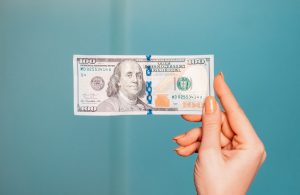The foreign exchange (forex) market is the largest and most liquid financial market in the world. Its daily trading volume is over $5 trillion, making it an attractive market for investors looking to leverage their monies. Leverage is the use of borrowed money to increase the potential return of an investment. In forex trading, leverage allows traders to control a large position with a smaller amount of capital. However, it is important to understand the risks of leverage and how to use it effectively.
What is leverage in forex trading?
Leverage in forex trading is the ability to control a larger position in the market with a smaller amount of capital. For example, with a 1:100 leverage ratio, a trader can control a $100,000 position with only $1,000 of capital. This means that if the market moves in the trader’s favor, they can potentially earn a larger return on their investment. However, if the market moves against them, losses can also be amplified.
How to leverage monies in forex trading?
1. Understand the risks of leverage
Before leveraging monies in forex trading, it is important to understand the risks involved. Leveraged trading can lead to significant gains, but it can also result in significant losses. It is important to have a clear understanding of the risks involved and to have a risk management strategy in place.
2. Choose a reputable broker
When trading forex with leverage, it is important to choose a reputable broker who offers a variety of trading tools, educational resources, and risk management tools. The broker should also have a strong track record of reliability and security.
3. Develop a trading strategy
Developing a trading strategy is essential for leveraging monies in forex trading. The strategy should include entry and exit points, risk management techniques, and a plan for managing leverage. The trader should also be aware of economic events that can impact the market and adjust their strategy accordingly.
4. Use stop-loss orders
Stop-loss orders are a risk management tool that can help limit losses in a leveraged position. A stop-loss order is an automatic order to sell a position if it reaches a certain price level. This can help limit losses in the event that the market moves against the trader.
5. Monitor the market
When trading forex with leverage, it is important to monitor the market closely. Traders should be aware of economic events, news releases, and other factors that can impact the market. They should also be prepared to adjust their strategy as needed based on market conditions.
6. Use proper money management techniques
Proper money management techniques are essential for leveraging monies in forex trading. Traders should only risk a small percentage of their capital on each trade and should never risk more than they can afford to lose. They should also have a plan for reinvesting profits and managing losses.
7. Practice with a demo account
Before leveraging monies in a live forex trading account, it is important to practice with a demo account. A demo account allows traders to test their strategy and risk management techniques without risking real money. This can help traders gain confidence and develop a successful trading strategy.
Conclusion
Leverage can be a powerful tool for traders looking to increase their return on investment in the forex market. However, it is important to understand the risks involved and to use leverage effectively. Traders should choose a reputable broker, develop a trading strategy, use stop-loss orders, monitor the market, use proper money management techniques, and practice with a demo account before leveraging monies in a live trading account. With the right approach, leverage can help traders achieve their financial goals in the forex market.






